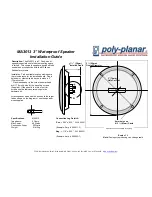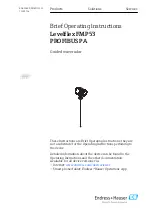
Quick Installation Guide
Document
WERA4-Quick-US-200917
Page 47 of 73
7.1.3
Process after Measurement
WERA Desk provides three options of automatic post processing new WERA data.
If the sea echoes check box is marked, the script located at
/home/wera/etc/process_SORT.sh is executed at the end of an acquisition measurement
cycle. This script can e.g. process radial current velocities from the measured data and
transfer the results to a central server.
If the calibr. data check box is marked, the script located at
/home/wera/etc/process_CAL.sh is executed at the end of a calibration measurement
cycle. This script can e.g. be used to process automatic directpath test (DPT)
measurements.
If the FM raw data check box is marked, the script located at
/home/wera/etc/process_RAW.sh is executed at the end of an FM raw acquisition
measurement cycle.
7.1.4
Time slot
Master
Run WERA in time slot 0 - default
Slave 1
Run WERA in time slot 1
Slave 2
Run WERA in time slot 2
Triangle Run WERA in triangular sweep mode
Remarks
Time slots are currently ignored
. Use different time offsets in "Cont. Acqu. Start Time" or different "Working
Frequency" entries to avoid multiple WERAs to interfere with each other.
WeraDesk V2.4 and higher activates in Master mode to chirp up in frequency and in Slave
modes to chirp down in frequency. This avoids two WERAs operating at the same
frequency to interfere with each other, when run simultaneously (or at least reduces the
interference to a minimum).
Note that calibration should only be performed in Master mode.
7.1.5
Receiver Attenuation
Note that older WERA systems do not support this feature.
If available, the input signals of each channel can be attenuated by a fixed value in dB.
Some WERA systems got 0 dB and
–6 dB receiver input attenuation available, while the
latest systems got steps of 0 dB, -4 dB, -8 dB and
–12 dB receiver input attenuation.
This feature should only be activated, if the direct path signal between TX and RX antenna
arrays is too large to further increase TX power. E.g. by activating
–8 dB receiver input
attenuation, TX power could be increased by +8dB, if possible.
By increasing TX power, the signal to (external) noise ratio can be increased. This will
result in larger ranges and better coverage of the measurement area.
















































